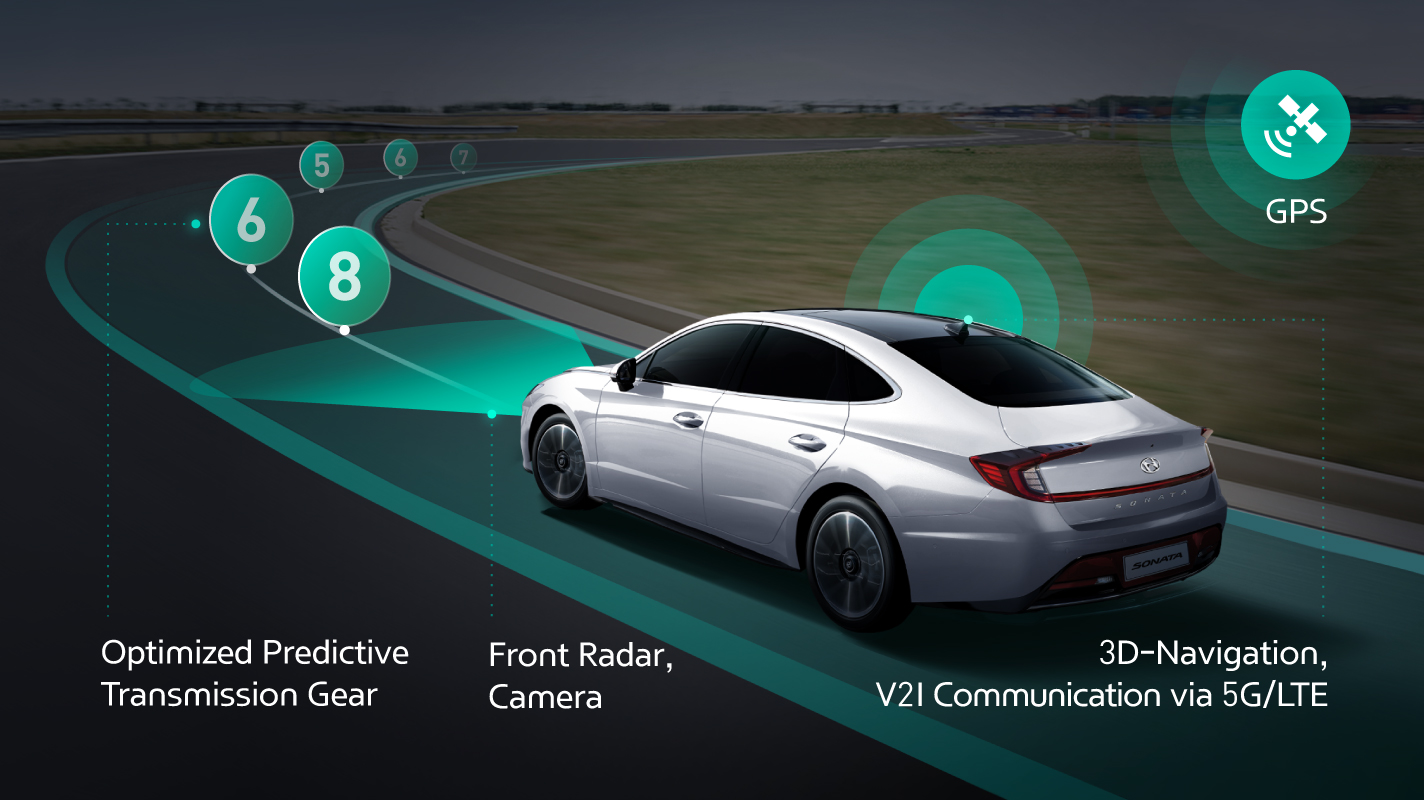Hyundai and Kia have announced their development of the “world’s first predictive Information and Communication Technology (ICT) connected shift system”, which enables the vehicle to automatically shift to the optimal gear after identifying the road and traffic conditions ahead.
According to the two companies, the system uses intelligent software in the Transmission Control Unit (TCU) that collects and interprets real-time input from other technology, such as including 3D navigation, cameras and radar. The TCU then predicts the optimal shift scenario for real-time driving situations through an artificial intelligence algorithm and shifts the gears accordingly. For example, when a relatively long slowdown is expected and radar detects no speed irregularities with the car ahead, the transmission clutch temporarily switches to neutral mode to improve fuel efficiency.
“Vehicles are evolving beyond simple mobility devices into smart mobility solutions,” said Intelligent Drivetrain Control Research Lab head, Byeong Wook Jeon. “Even a traditional area of the automobile, such as the powertrain, is becoming a high-tech technology optimised for smart mobility through efforts to integrate ICT and artificial intelligence technologies.”
The companies tested a vehicle with the ICT connected shift system on a heavily curved road, resulting in the frequency of shifts in cornering being reduced by around 43 per cent compared to vehicles without the system. The system also reduced the frequency of brake operation by about 11 per cent, minimising driving fatigue and brake wear.
Hyundai and Kia say they are planning to further develop the ICT connected shift system into an even more intelligent transmission technology that can communicate with traffic signals based on LTE or 5G communication, along with identifying drivers’ tendencies, to further refine gear-shift control.

